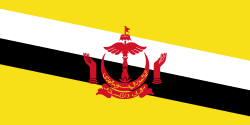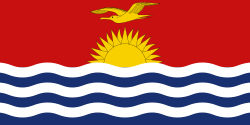Judicial Committee of the Privy Council
Das Judicial Committee of the Privy Council (JCPC), gegründet 1833,[1] ist das oberste Appellationsgericht für die Kronbesitzungen und Überseegebiete des Vereinigten Königreichs von Großbritannien und Nordirland, jene Commonwealth-Länder, die die höchste Appellationsinstanz bei der britischen Krone belassen haben, sowie einige weitere inländische Gerichte.[2] Formell bildet er – wie das Kabinett des Vereinigten Königreichs – einen Ausschuss des Privy Council (Geheimen Kronrats) des Monarchen.
Das Judicial Committee zog am 13. August 2009 um und befindet sich seitdem, zusammen mit dem Supreme Court, im Supreme Court Building am Parliament Square in London.[2] Das Verfahren richtet sich nach eigenen Bestimmungen.[3]
Rolle und Struktur
Bis Ende August 2009 wurde die Rolle des obersten Gerichts im Vereinigten Königreich von zwei unterschiedlichen Instanzen wahrgenommen: innerhalb des Vereinigten Königreichs vom Appellate Committee of The House of Lords und außerhalb vom Judicial Committee of the Privy Council. Seit dem 1. Oktober 2009 wird die Rolle des obersten Berufungsgerichts im Vereinigten Königreich vom Supreme Court wahrgenommen. Damit fiel die Rolle des Appellate Committee of The House of Lords als oberstes Gericht weg.
Die Zuständigkeiten des Judicial Committee of the Privy Council blieben jedoch weitgehend bestehen und gliedern sich wie folgt:
Berufungsverfahren im Vereinigten Königreich
Das Judicial Committee of the Privy Council ist zuständig:[4]
- in Berufungsverfahren des Ehrengerichts des Royal College of Veterinary Surgeons (berufsständische Organisation der Tiermediziner),[5]
- in Berufungsverfahren gegen Pläne von Kirchenbeauftragten (welche den Besitz der Church of England verwalten),[6]
- in Berufungsverfahren des Arches Court of Canterbury und des Chancery Court of York in nicht-doktrinellen Fällen,[7]
- in Berufungsverfahren des Court of Chivalry (Gerichtshof für die missbräuchliche Verwendung von Wappen),
- in Berufungsverfahren des Court of Admiralty (Gericht der Admiralität) zuständig für die Cinque Ports (Bund von Hafenstädten),
- in Berufungsverfahren des Prize Courts (in Bezug auf in Kriegen gekaperte Schiffe),[8]
- in Streitigkeiten unter dem House of Commons Disqualification Act (in Bezug auf Mitglieder des House of Commons).[9]
- Außerdem hat der König bzw. die Königin die Autorität, entsprechend dem Abschnitt 4 des Judicial Committee Act 1833[1] jede Angelegenheit zur Erörterung und Berichterstattung an das Judicial Committee of the Privy Council zu überweisen.
Entsprechend dem Constitutional Reform Act 2005 (Verfassungsreformgesetz von 2005) werden Devolutions (Verlagerung politischer Kompetenzen) des Vereinigten Königreichs in die Regionen jetzt vom Supreme Court gehört.
Kronbesitzungen der britischen Krone
Das Judicial Committee of the Privy Council ist zuständig für die Kronbesitzungen der britischen Krone (Crown dependencies):[4]
Überseegebiete
Das Judicial Committee of the Privy Council ist für folgende 14 Überseegebiete (overseas territories) zuständig:[4]
 Akrotiri und Dhekelia,[11] Militärbasen auf Zypern
Akrotiri und Dhekelia,[11] Militärbasen auf Zypern Anguilla[12] (Eastern Caribbean Supreme Court, ECSC)
Anguilla[12] (Eastern Caribbean Supreme Court, ECSC) Bermuda
Bermuda Britisches Antarktis-Territorium[13]
Britisches Antarktis-Territorium[13] Britisches Territorium im Indischen Ozean[14]
Britisches Territorium im Indischen Ozean[14] Britische Jungferninseln[15] (ECSC)
Britische Jungferninseln[15] (ECSC) Cayman Islands[16]
Cayman Islands[16] Falklandinseln[17]
Falklandinseln[17] Gibraltar[18]
Gibraltar[18] Montserrat[19] (ECSC)
Montserrat[19] (ECSC) Pitcairninseln[20]
Pitcairninseln[20] St. Helena, Ascension und Tristan da Cunha[21]
St. Helena, Ascension und Tristan da Cunha[21] Südgeorgien und die Südlichen Sandwichinseln[22]
Südgeorgien und die Südlichen Sandwichinseln[22] Turks- und Caicosinseln[23]
Turks- und Caicosinseln[23]
Commonwealth
Das Judicial Committee of the Privy Council ist für folgende, in Personalunion mit der britischen Krone verbundenen Commonwealth-Staaten (Commonwealth Realms) zuständig:[4]
 Antigua und Barbuda[24] (ECSC)
Antigua und Barbuda[24] (ECSC) Bahamas[25]
Bahamas[25] Cookinseln (mit Neuseeland assoziiert)
Cookinseln (mit Neuseeland assoziiert) Grenada
Grenada Jamaika[26]
Jamaika[26] Niue (mit Neuseeland assoziiert)
Niue (mit Neuseeland assoziiert) St. Kitts und Nevis[27] (ECSC)
St. Kitts und Nevis[27] (ECSC) St. Lucia[28] (ECSC)
St. Lucia[28] (ECSC) St. Vincent und die Grenadinen[29] (ECSC)
St. Vincent und die Grenadinen[29] (ECSC) Tuvalu[30]
Tuvalu[30]
Mit der Einrichtung eines eigenen Supreme Court schaffte Neuseeland 2004 den in London für sich bis dahin zuständigen Privy Council ab. Allerdings hatte diese Änderung keinen Einfluss auf die Zuständigkeit des Judicial Committee of the Privy Council für die assoziierten Länder Cook Islands und Niue.
Das Judicial Committee of the Privy Council ist weiterhin auch für folgende Commonwealth-Staaten zuständig:[4]
Ehemaliger Zuständigkeitsbereich
Ehemals zum Zuständigkeitsbereich gehörten zahlreiche weitere Gebiete, darunter:[35]
 Irischer Freistaat (bis 1933)
Irischer Freistaat (bis 1933) Kanada (1949)
Kanada (1949) Indien (1950)
Indien (1950) Pakistan (1950)
Pakistan (1950) Südafrikanische Union (1950)
Südafrikanische Union (1950) Nigeria (1963)
Nigeria (1963) Australien (1968/1986)
Australien (1968/1986) Guyana (1970; nunmehr Caribbean Court of Justice, CCJ)
Guyana (1970; nunmehr Caribbean Court of Justice, CCJ) Lesotho (1970)
Lesotho (1970) Ceylon (1972)
Ceylon (1972) Malaysia (1985)
Malaysia (1985) Singapur (1994)
Singapur (1994) Hongkong (1997)
Hongkong (1997) Gambia (1998)
Gambia (1998) Neuseeland (2004)
Neuseeland (2004) Barbados (2005; CCJ)
Barbados (2005; CCJ) Belize (2010; CCJ)
Belize (2010; CCJ) Dominica (2015; CCJ)
Dominica (2015; CCJ)
Literatur
- William Francis Finlason: The History, Constitution, and Character, of the Judicial Committee of the Privy Council. Hrsg.: Stevens and Sons, and George Bell and Sons. London 1878 (englisch, Volltext in der Google-Buchsuche).
- Geoffrey Rivlin: Understanding the Law. 6. Auflage. Oxford University Press, Oxford 2012, ISBN 978-0-19-960880-5, S. 164–165 (englisch, Volltext in der Google-Buchsuche).
Weblinks
- Offizielle Webseite. Judicial Committee of the Privy Council, abgerufen am 9. Februar 2016 (englisch).
- Charlotte Smith: The Judicial Committee – An introduction to the Judicial Committee of the Privy Council. Privy Council Papers – Online, archiviert vom am 26. Dezember 2014; abgerufen am 9. Februar 2016 (englisch, Originalwebseite nicht mehr verfügbar).
Einzelnachweise
- ↑ a b Judicial Committee Act 1833. The National Archives, abgerufen am 23. September 2012 (englisch).
- ↑ a b Judicial Committee – Overview. Privy Council Office, abgerufen am 23. September 2012 (englisch).
- ↑ The Judicial Committee (Appellate Jurisdiction) Rules Order 2009, S.I. 2009/224, 2013/246, Schedule
- ↑ a b c d e Role of the JCPC. Judicial Committee of the Privy Council, abgerufen am 9. Februar 2016 (englisch).
- ↑ Veterinary Surgeons Act 1966, section 17
- ↑ Mission and Pastoral Measure 2011, section 12, Schedule 2
- ↑ Ecclesiastical Jurisdiction and Care of Churches Measure 2018, section 21
- ↑ Naval Prize Act 1864, section 6
- ↑ House of Commons Disqualification Act 1975, section 7
- ↑ a b Order in Council regulating appeals to His Majesty in Council from Jersey and Guernsey (1835), S.R. & O. 1835/715
- ↑ The Sovereign Base Areas of Akrotiri and Dhekelia (Appeals to Privy Council) Order in Council 1961, S.I. 1961/59
- ↑ The Anguilla (Appeals to Privy Council) Order 1983, S.I. 1983/1109
- ↑ The British Antarctic Territory Court of Appeal (Appeal to Privy Council) Order 1965, S.I. 1965/592
- ↑ The British Indian Ocean Territory (Appeals to Privy Council) Order 1983, S.I. 1983/1888
- ↑ The Virgin Islands (Appeals to Privy Council) Order 1967, S.I. 1967/234, 1983/1108
- ↑ The Cayman Islands (Appeals to Privy Council) Order 1984, S.I. 1984/1151
- ↑ The Falkland Islands (Appeals to Privy Council) Order 1985, S.I. 1985/445
- ↑ The Gibraltar (Appeals to Privy Council) Order 1985, S.I. 1985/1199
- ↑ The Montserrat (Appeals to Privy Council) Order 1967, S.I. 1967/233, 1983/1108
- ↑ The Pitcairn (Appeals to Privy Council) Order 2000, S.I. 2000/1816
- ↑ The St. Helena Court of Appeal (Appeal to Privy Council) Order 1964, S.I. 1964/1846, 1990/991
- ↑ The South Georgia and South Sandwich Islands (Appeals to Privy Council) Order 1985, S.I. 1985/450
- ↑ The Turks and Caicos Islands (Appeals to Privy Council) Order 1965,S.I. 1965/1863 ( des vom 2. September 2019 im Internet Archive) Info: Der Archivlink wurde automatisch eingesetzt und noch nicht geprüft. Bitte prüfe Original- und Archivlink gemäß Anleitung und entferne dann diesen Hinweis.
- ↑ Antigua and Barbuda Constitution Order 1981, S.I. 1981/1106, Schedule 1, section 122
- ↑ Bahamas Independence Order 1973, S.I. 1973/1080, Schedule, Articles 104(2) and 105
- ↑ Jamaica (Constitution) Order in Council 1962, S.I. 1962/1550, Schedule 2, section 110
- ↑ St. Christopher and Nevis Constitution Order 1983, S.I. 1983/881, Schedule 1, section 99
- ↑ St. Lucia Constitution Order 1978, S.I. 1978/1901, Schedule 1, section 108
- ↑ The St. Vincent Constitution Order 1979, S.I. 1979/916, Schedule 1, section 99
- ↑ The Tuvalu Independence Order 1978, Schedule, section 84
- ↑ Brunei (Appeals) Order 1989, S.I. 1989/2396, 1998/255
- ↑ The Kiribati Appeals to Judicial Committee Order 1979, S.I. 1979/720
- ↑ The Mauritius Appeals to Judicial Committee Order 1992, S.I. 1992/1716
- ↑ The Trinidad and Tobago Appeals to Judicial Committee Order 1976, S.I. 1976/1915
- ↑ vgl. JCPC Jurisdiction Map, 1937 jurisdiction
Auf dieser Seite verwendete Medien
Flagge des Vereinigten Königreichs in der Proportion 3:5, ausschließlich an Land verwendet. Auf See beträgt das richtige Verhältnis 1:2.
Flagge des Vereinigten Königreichs in der Proportion 3:5, ausschließlich an Land verwendet. Auf See beträgt das richtige Verhältnis 1:2.
Flag of Anguilla, adopted on 30 May 1990 and modified slightly on 25 January 1999.
Flag of the Turks and Caicos Islands
Flagge Trinidad und Tobago
Man sagt, dass der grüne Teil die Mehrheit der katholischen Einwohner des Landes repräsentiert, der orange Teil die Minderheit der protestantischen, und die weiße Mitte den Frieden und die Harmonie zwischen beiden.
Flag of Canada introduced in 1965, using Pantone colours. This design replaced the Canadian Red Ensign design.
Flag of South Africa, used between 1928 and 1982. It is identical to the 1982 to 1994 version except that the shade of blue is darker. It is also known as the "Oranje-Blanje-Blou".
Flag of Australia, when congruence with this colour chart is required (i.e. when a "less bright" version is needed).
See Flag of Australia.svg for main file information.Flag of Hong Kong (1959–97). Granted on 21 January 1959, used until 30 June 1997
Flag of Hong Kong (1959–97). Granted on 21 January 1959, used until 30 June 1997
(c) Zscout370 in der Wikipedia auf Englisch, CC BY-SA 3.0
The first flag of the nation of Lesotho, used from 1966 until 1987. Elements from this flag can be seen on the current national flag, in use starting in 2006.
The flag of the Pitcairn Islands, arms courtesy an e-mail from the author of xrmap and the Blue Ensign from Image:Government Ensign of the United Kingdom.svg
Flagge Gibraltars
Autor/Urheber: Fry1989 eh?, Lizenz: CC0
Flag of the Isle of Mann. This version has the triskelion centered as a whole rather than based upon the imaginary circle created by the prongs of each leg.















































